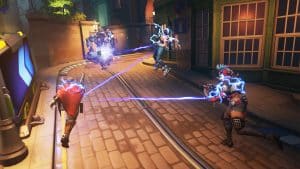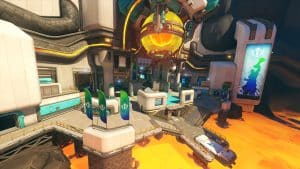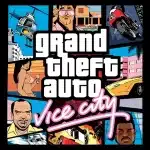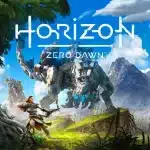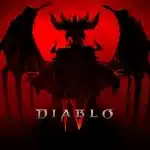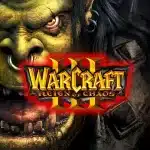Overwatch 2
Related Games
Description
🔥 What is Overwatch 2 for PC?
Overwatch 2 is Blizzard’s ambitious follow-up to its wildly successful team-based shooter, Overwatch. At its core, it retains the hero-shooter DNA that made the original such a phenomenon, but it expands the formula with new maps, new heroes, a reworked competitive structure, and a stronger emphasis on both cooperative and competitive play. Where the first game thrived on six-player squads, Overwatch 2 reshapes the battlefield by moving to a 5v5 format, a change that deeply affects how every match flows, how roles function, and how players interact with one another.
Narratively, Overwatch 2 continues the overarching story of a near-future world teetering between unity and division. Familiar heroes like Tracer, Winston, and Reaper return, while fresh faces such as Sojourn, Junker Queen, and Kiriko join the fray, adding new lore and playstyles. Blizzard has also leaned harder into PvE (player versus environment) storytelling, attempting to weave cooperative missions into the broader identity of the game. While PvE is not the primary focus at launch, it signals the developer’s intent to turn Overwatch into not just a competitive shooter but also a living narrative universe.
Whether you are diving in for the adrenaline of tightly contested PvP matches or exploring the world through seasonal events and limited-time PvE missions, Overwatch 2 positions itself as both a familiar continuation and a bold reinvention.
👉 Features of Overwatch 2
Revamped 5v5 Format
The most impactful change in Overwatch 2 is the move from 6v6 to 5v5 battles. By reducing one tank slot, matches feel faster and more decisive. Teams now rely more heavily on positioning and coordination, and tank players carry even more responsibility since they are the single frontline protector.
New Heroes and Expansive Roster
Overwatch 2 launched with several brand-new heroes, including Sojourn, a railgun-wielding DPS hero, Junker Queen, a melee-focused tank with disruptive abilities, and Kiriko, a support blending healing talismans with ninja mobility. These characters join the already large roster, which continues to grow with seasonal updates. Each new hero adds both mechanical depth and narrative richness.
Seasonal Model with Battle Pass
Blizzard shifted to a seasonal content model. Instead of loot boxes, players progress through a battle pass system, unlocking cosmetics, skins, and even heroes by completing challenges. This system aligns Overwatch 2 with modern live-service games and ensures a steady flow of content.
PvE Missions and Story Elements
Although scaled back from original promises, Overwatch 2 introduces story-driven PvE missions that expand the lore of the Overwatch universe. These cooperative experiences allow players to face off against AI enemies while exploring character relationships and world events, serving as a bridge between competitive chaos and narrative immersion.
Cross-Play and Cross-Progression
Overwatch 2 fully supports cross-play between PC and consoles, while cross-progression ensures that your unlocked heroes, skins, and progression carry over seamlessly across platforms.
Gameplay
Core Hero-Shooter Dynamics
At its heart, Overwatch 2 is still about choosing from a diverse roster of heroes, each with unique abilities, weapons, and roles. The three roles Tank, Damage, and Support remain the backbone of team composition, but the new 5v5 structure shifts dynamics considerably. Teams now have to think carefully about coordination since there is less redundancy in protection and healing.
Modes and Objectives
Classic objective-based modes like Escort, Hybrid, and Control return, but the highlight new addition is Push, where teams escort a giant robot across the map by maintaining control of its movement. Push quickly became a signature mode, blending offense and defense seamlessly while offering chaotic but fair tug-of-war style gameplay.
Competitive and Ranked Changes
Ranked play received a structural overhaul. Instead of seeing exact numbers climb or fall after each match, players advance in visible tiers updated after a set number of games. This system aims to reduce tilt and keep focus on consistent performance rather than obsessing over each individual loss.
Hero Reworks and Balancing
Several heroes from the original game underwent major reworks. Orisa transformed from a stationary anchor tank into a more aggressive brawler, Bastion gained mobility and new abilities, and Doomfist shifted roles from damage dealer to tank. These changes ensure that veterans feel both familiar and challenged while learning the new balance.
Event and Seasonal Content
Each season brings limited-time modes, new skins, and holiday-themed events. Blizzard uses these to keep the game fresh and varied, giving players reasons to return beyond the ranked grind.
Graphics
Updated Visual Fidelity
Overwatch 2 doesn’t reinvent its art style but rather enhances it. The colorful, cartoon-inspired visuals remain central, but textures, lighting, and effects have been upgraded to modern standards. Maps feel brighter, more detailed, and alive with environmental storytelling.
Map Redesigns and New Locations
Returning maps received significant updates to lighting and design, making them feel more dynamic under the new engine. Meanwhile, brand-new maps like New Queen Street in Toronto and Colosseo in Rome showcase Blizzard’s worldbuilding talent, merging cultural references with tactical layouts.
Character Design and Animations
Every hero has been visually updated, with new costumes and refined animations that reflect their evolving storylines. Abilities feel weightier thanks to improved visual effects Kiriko’s healing talismans float gracefully, while Sojourn’s railgun crackles with electric intensity.
UI and Presentation
Menus, scoreboards, and HUD elements were streamlined to improve clarity. Spectator tools also received polish, making Overwatch 2 more watchable for esports and streaming audiences.
Pros and Cons
✔️ Pros
- Faster and Cleaner Gameplay: The 5v5 structure makes matches more engaging, reducing chaos while emphasizing skillful play.
- Expanding Hero Roster: New heroes like Sojourn, Junker Queen, and Kiriko bring fresh strategies and narratives.
- Seasonal Content Model: Regular updates and a battle pass system keep the game relevant and rewarding.
- Cross-Play and Cross-Progression: A true modern feature set that allows players to enjoy the game anywhere without losing progress.
❌ Cons
- Scaled-Back PvE Ambitions: Many players were disappointed by the reduction of the originally promised cooperative campaign.
- Balance Struggles: Hero reworks and new abilities occasionally create frustrating metas.
- Battle Pass Grind: While better than loot boxes for some, others find the grindy progression model tiresome.
ℹ️ Game information
Release Date: 10/08/2023
Update Date: 30/09/2025
Version: v4.08/1.000.072
Genre: Action
Platform: PC
Language: ![]()
![]()
![]()
![]()
![]()
![]()
![]()
![]()
Weight: 50 GB
Additional info: New version includes all DLCs to date
⭐ Installation Instructions
- The game is fully complete, you just need to install it, so there is no need to unpack it or download it from other sources.
- Just run the Overwatch 2.exe installation file.
- Simply launch the game from shortcut desktop.
⚙️ System Requirements
✅ Minimum:
- OS: Windows 10 64-bit
- Processor: Intel® Core™ i3 / AMD Phenom™ X3 8650
- Memory: 6 GB RAM
- Graphics: NVIDIA® GeForce® GTX 600 series / AMD Radeon™ HD 7000 series
- DirectX: Version 11
- Network: Broadband Internet connection
- Storage: 50 GB available space
✅ Recommended:
- OS: Windows 10 64-bit
- Processor: Intel® Core™ i7 / AMD Ryzen™ 5
- Memory: 8 GB RAM
- Graphics: NVIDIA® GeForce® GTX 1060 / AMD R9 380
- DirectX: Version 11
- Network: Broadband Internet connection
- Storage: 50 GB available space
Developer's games
Video
Images
